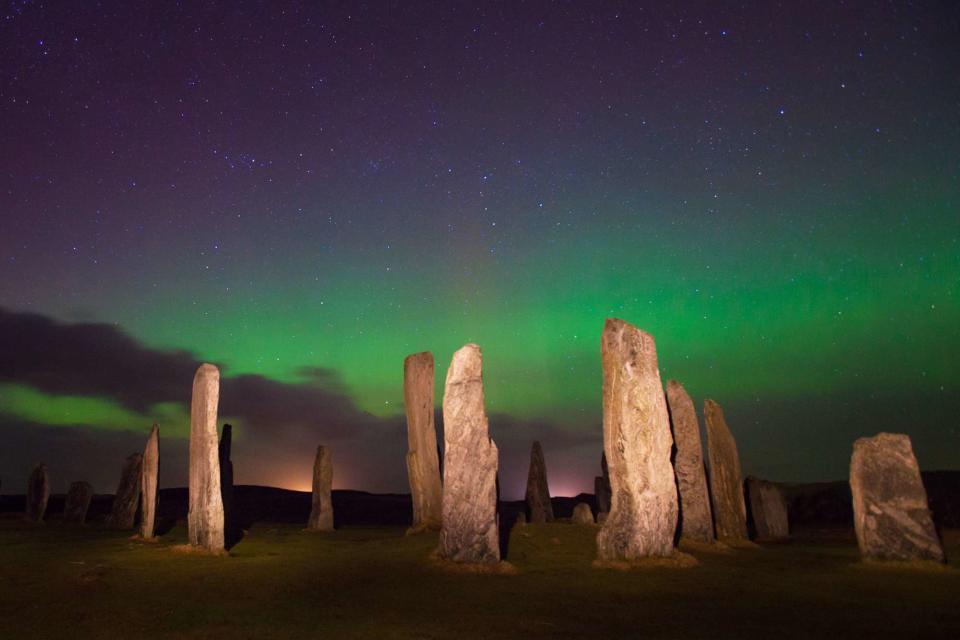This Is the Most Affordable Place to See the Northern Lights — and No, It's Not Iceland or Norway
The Isle of Harris in Scotland offers the best budget value.

RichardALock/Getty Images
The Northern Lights over the Callanish Stones of Lewis and Harris, a Scottish island in the Outer HebridesWe're inching ever closer to winter, which means colder days and longer nights. And if you're hoping to see the Northern Lights, that's a really good thing — especially when you learn we may also be reaching "Solar Maximum," aka the sun is reaching the peak of its 11-year cycle, making solar activity all the more potent and the lights to likely be brighter and more abundant between now and 2026. However, getting to the destinations where the Northern Lights are the most present can feel like an expensive endeavor. But it doesn't have to be.
The travel experts at InsureandGo recently shared the findings of their study seeking to unveil the cheapest places to visit that also offer a chance to spot the Northern Lights. To find the spots, it analyzed the average cost of hotels close to or within locations across Europe, North America, and Canada, which are also known as excellent bases for aurora-watching.
After looking at the data, it named the Isle of Harris in Scotland as the cheapest option, with hotels available for just $54 a night. The island makes for an excellent viewing experience as it's made up of mostly sandy beaches with very little light pollution from its fewer than 2,000 full-time residents.
Northern Lights, Explained: What They Are and How to See Them
Scotland also took the second-place spot with Cairngorms National Park, thanks to hotels going for as low as $71 per night. It was followed by Gjogv in the Faroe Islands in third, Brecon Beacons National Park in Wales, and Rovaniemi in Finland rounding out the top five destinations.
However, the website isn't just here to tell you the cheapest places to go. It also partnered with James LaBelle, a professor of physics and astronomy at Dartmouth College, to share his tips for maximizing your chances of seeing the lights.
“A major factor is having darkness, which means no or very little moon in the sky," LaBelle said about finding the right conditions to see the lights. "The best opportunity to observe the aurora is during approximately half the time when the moon is either below the horizon or very small."
As for what time of day is best for spotting, LaBelle revealed, “around midnight is typically when the aurora makes its most southerly extent and when it is most active."
And when you do head out to try and spot the lights, LeBelle has one specific warning: do not look at your phone — at all. “You want to keep your eyes adjusted to the dark," he shared, "so looking at a phone or turning on a bright light would force you to readjust, losing some precious time watching."
For more Travel & Leisure news, make sure to sign up for our newsletter!
Read the original article on Travel & Leisure.


